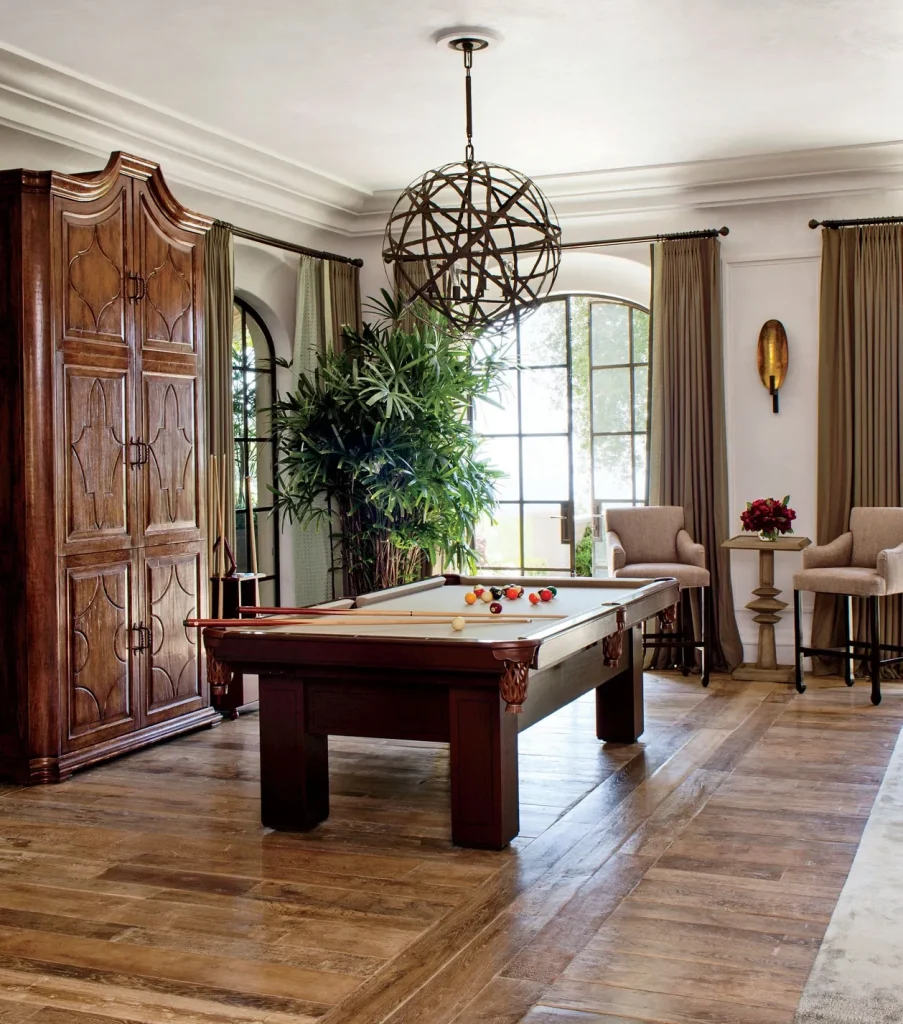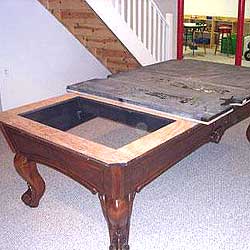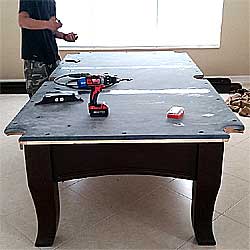Call us; 1-508-254-5671
Somerville, MA
Pool Table Billiard Movers and Repair
With 30 years of pool table best practices. Somerville, Massachusetts
Who offers professional repair, re-felt, re-leveling of pool billiard tables? Who is a reliable billiard pool table mover for moving my pool table?
Safely moving a pool table.
I acquired a billiard table from the web, and who will install and move it? Corner Pocket Pool Table Services, Your safest, best choice. In Somerville, MA, Massachusetts MA, New Hampshire NH, Vermont VT, Rhode Island RI, Pool billiard table work.
Billiards table felt replacement and movers, fixing and relocating pool tables in Somerville, Massachusetts neighborhoods for over 30 yrs. Moving and repairing pool tables in all styles and from all brands.
Corner Pocket Pool Table Service is a family business, and covering Somerville, Massachusetts. Billiard and pool table movers and service experts.
Billiard table tune-up and re-felt service, or transport your table from Somerville to anywhere within new england.
Five star ratings and reviews, Somerville, Massachusetts.

Somerville, MA Local Pool Table Movers
Somerville, MA Local Billiard Table Movers
Move a pool table from Somerville, MA
Move a pool table to Somerville, MA
Somerville, MA Pool Table Moving
Companies that move Pool Tables
Somerville, MA Re-Felting Pool Tables
Somerville, MA Pool Table Repairs
Somerville, MA Fix my Pool Table
Somerville, MA Pool Table Refelting
Somerville, MA Refelting A Pool Table
Somerville, MA Pool Table Mover

Somerville ( SUM-ər-vil) is a city located directly to the northwest of Boston, and north of Cambridge, in Middlesex County, Massachusetts, United States. As of the 2020 United States Census, the city had a total population of 81,045 people. With an area of 4.12 square miles (10.7 km), the city has a density of 19,671/sq mi (7,595/km2), making it the most densely populated municipality in New England and the 16th most densely populated incorporated municipality in the country. Somerville was established as a town in 1842, when it was separated from Charlestown. In 2006, the city was named the best-run city in Massachusetts by The Boston Globe. In 1972, 2009, and 2015, the city received the All-America City Award. It is home to Tufts University, which has its campus along the Somerville and Medford border.
The territory now comprising the city of Somerville was first settled by Europeans in 1629 as part of Charlestown. In 1629, English surveyor Thomas Graves led a scouting party of 100 Puritans from the settlement of Salem to prepare the site for the Great Migration of Puritans from England. Graves was attracted to the narrow Mishawum Peninsula between the Charles and Mystic rivers, linked to the mainland at the present-day Sullivan Square. The area of earliest settlement was based at City Square on the peninsula, though the territory of Charlestown officially included all of what is now Somerville, as well as Medford, Everett, Malden, Stoneham, Melrose, Woburn, Burlington, and parts of Arlington and Cambridge. From that time until 1842, the area of present-day Somerville was referred to as “beyond the Neck” in reference to the thin spit of land, the Charlestown Neck, that connected it to the Charlestown Peninsula.
The first European settler in Somerville of whom there is any record was John Woolrich, an Indian trader who came from the Charlestown Peninsula in 1630, and settled near what is now Dane Street. Others soon followed Woolrich, locating in the vicinity of present-day Union Square. In 1639 colonists officially acquired the land in what is now Somerville from the Squaw Sachem of Mistick. The population continued to slowly increase, and by 1775 there were about 500 inhabitants scattered across the area. Otherwise, the area was mostly used as grazing and farmland. It was once known as the “Stinted Pasture” or “Cow Commons”, as early settlers of Charlestown had the right to pasture a certain number of cows in the area.
John Winthrop, the first colonial governor of the Massachusetts Bay Colony, was granted 600 acres (240 hectares) of land in the area in 1631. Named for the ten small knolls located on the property, Ten Hills Farm extended from the Cradock Bridge in present-day Medford Square to Convent Hill in East Somerville. Winthrop lived, planted, and raised cattle on the farm. It is also where he launched the first ship in Massachusetts, the “Blessing of the Bay”. Built for trading purposes in the early 1630s, it was soon armed for use as a patrol boat for the New England coast. It is seen as a precursor to the United States Navy. The “Ten Hills” neighborhood, located in the northeastern part of the city, has retained the name for over 300 years. New research has found that less than a decade after John Winthrop moved to the farm in 1631, there were enslaved Native American prisoners of war on the property. Each successive owner of Ten Hills Farm would depend upon slavery’s profits until the 1780s, when Massachusetts abolished the practice.
In a short time, the settlers began laying out roads in all directions in search of more land for planting and trade with various Native American tribes in the area. Laid out as early as the mid-1630s, the earliest highway in Somerville was probably what is now Washington Street, and led from present-day Sullivan Square to Harvard Square. In its earliest days, Washington Street was known as the “Road to Newtowne” (renamed Cambridge in 1638). During the 1700s and early 1800s, Washington Street, together with Somerville Avenue, comprised “Milk Row”, a route favored by Middlesex County dairy farmers as the best way to get to the markets of Charlestown and Boston.
Laid out in 1636, Broadway was likely the second highway built in the area. Originally called “Menotomie’s Road”, it ran from the Charlestown Neck to the settlement at Menotomy (present-day Arlington). Initially bordered by farmsteads, Broadway would come into its own as a commercial thoroughfare after horse-drawn trolleys were introduced to the highway in 1858.
Somerville was home to one of the first hostile acts of the American Revolutionary War. The removal of gunpowder by British soldiers from a powder magazine in 1774, and the massive popular reaction that ensued, are considered to be a turning point in the events leading up to war.
Diverse Tables
From basic models, to less common; custom, hand-made tables and everything in the middle. We’ve seen a great many them. Not to say that we have really seen each model of table that there is… The standards are much the same starting with one then onto the next. Occasionally we see a new technique. We love to learn these, and it is always enjoyable to have a finished product you will love!Distinctive Houses
From Landmark houses in Somerville, to delightful little homes, we’ve placed tables in every one of them.
Also, we treat every house like our own. We anticipate giving you the best working pool table you’ve ever played on.

